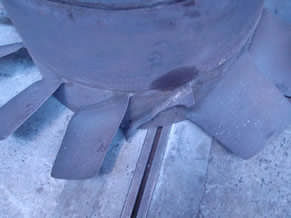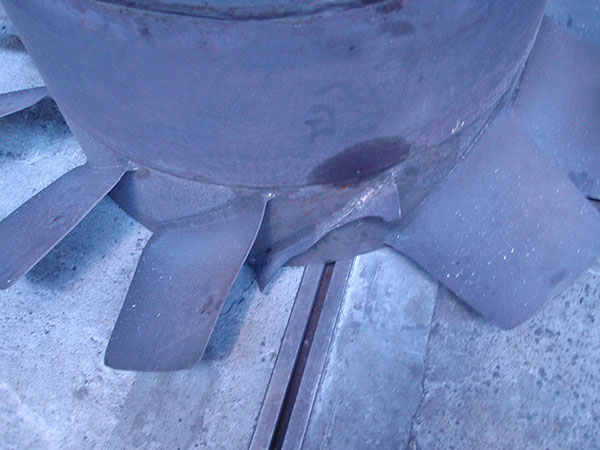In previous issues we have talked about natural frequencies as applied to the shaft /impeller assembly. There is another issue that can sometimes lead to problems in operation, this I shall broadly term “resonance”, but it is very similar to natural frequency, as you will see in the following description.
In impeller design we also need to consider the ability of blade to withstand vibration caused by factors such as machine vibration, turbulence and such like. Here are a couple of examples.
This impeller has unsupported blades and as such a simple “dong test” – a smart tap on the blade- reveals that it is acting like a tuning fork, likely a cause or contributing cause to the blade failure shown

Analysis of the fracture edge reveals
a typical fatigue crack.
Tortional vibration is rare but can also occur. In this case the problem was shown to be the waveform from the VSD. It also has a devastating effect on the impeller, as you can see in this picture.

You can see cracking along the weld of the blade and around the rod (heel ring). This was a particularly difficult case, as the stiffer the impeller the quicker it cracked!
In a practical sense we can design to minimize or eliminate the tuning fork effect, but the tortional vibration example just shows you can only design for what is known. In this case it took many months (and broken impellers) to finally track down the source of the problem (the VSD waveform).
Morse Air Systems often get involved in industrial investigations of this nature. With our partner companies we have been able to provide practical solutions for a range of challenging problems in the field of air movement. If you have a difficult problem, or unresolved fan issues why not give our Engineering Department a call?

